'Sunlight'
“Curse the man who invented helium! Curse Pierre Jules César Janssen!” - Principal Skinner from an Episode of the Simpsons TV Series, speaking of the man who in 1868 was the first to discover a chemical element on another world - in the atmosphere of our Sun.
Early Efforts
The earliest extant large scale image of the Sun’s surface dates from the 2nd of April 1845 and was taken by the two French physicists, Armand Hippolyte Louis Fizeau (1819-1896) and Jean Bernhard Leon Foucault (1819-1868) from the Paris Observatory. However it is known that by the August of 1843, they had obtained ‘coin’ size images of the sun’s face which clearly showed the presence of spots.
Eclipse Photography
The first attempt to image an Eclipse of the Sun was made by the Italian physicist Gian Alessandro Majocchi from Milan on the 8th of July 1842, but he only succeeded in obtaining Daguerreotype photographs of the moments before and after totality. He also attempted to photograph the sun during Totality but his image unfortunately showed nothing. His photographs have not survived.
The first truly successful photograph of a Total Eclipse had to wait a further nine years before being taken. This meritorious event occured on the 28th July 1851 when a Daguerreotypist named Berkowski from Konigsberg in East Prussia (now Kaliningrad, Russia) succeeded in capturing the moment of Totality. His photograph recorded the inner corona and several prominences. His first name is not known.
Over the course of the following decades astronomers and the Governments of their countries mounted many Eclipse expeditions to the far flung corners of their empires Their sole aim was to photograph the fleeting moments of totality. Most notably was the 1860 expedition to the village of Rivabellosa in Northern Spain, when on the 18th of July, Warren De La Rue (1815-1889) obtains two Wet Collodion photographs of Totality using the Kew Photoheliograph. The Kew Photoheliograph was the first telescope specifically built to photograph the Sun.
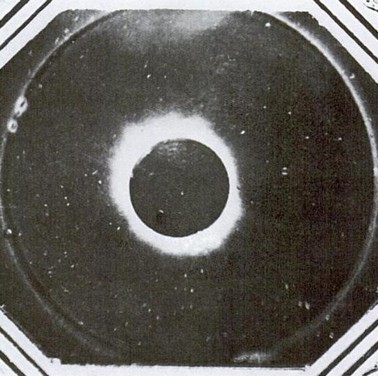
Total Eclipse, Berkowski, 1851
Photoheliographs & 'Revolvers'
The construction of the first Photoheliograph sparked an explosion in the construction of others of its kind, particularly by the English scientific instrument maker, John Henry Dallmeyer.
In the 1870s an extraordinary breed of solar photographic cameras known as ‘Revolvers’ began to appear. These remarkable instruments so called because of their apparent similarity in operation to the gun of the same name were an early forerunner of the Cine camera in that they took repeated images in quick succession to each other.
The most famous of these ‘Repeating Photographic Devices’ were those constructed for the French solar physicist, Pierre Jules Cesar Janssen (1824-1907). His device the ‘Revolver Photographique’ was built to capture the transit of the planet Venus across the face of the Sun, due to take place on the 9th of December 1874.
Other similar devices were constructed by Dallmeyer for use by a number of British expeditions sent to the four corners of the world to do the same thing. At that time Transits of Venus provided a rare opportunity for determining the Earth-Sun distance. This was in the days before radar and space probes. A remarkable fact regarding these expeditions is that as far as it known, despite thousands of ‘Revolver’ photographs being taken, not a single one has survived to this day.
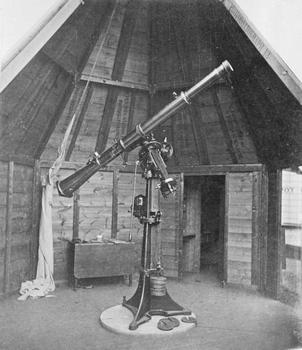
Dallmeyer Photoheliograph, Greenwich Observatory
Spectroheliograph
In 1890 the solar physicist, George Ellery Hale (1868-1938) invented an instrument known as the Spectroheliograph, which was able to take photographs of the Sun at a single wavelength of light. With the aid of the Spectroheliograph, the red solar prominences, could for the very first time be photographed without the need for a total eclipse of the Sun.
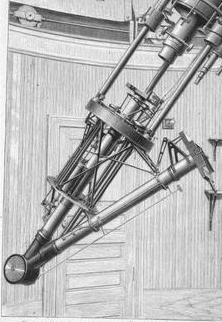
Hale Spectroheliograph, 1890
Solar Movies
The American astronomer, David Peck Todd (1855-1939) was without doubt the most unluckiest of people when it came to photographing a Total Solar Eclipse and in particular capturing the sun’s ‘pearly necklace’ known as the Corona. During the years 1887 to 1901, in the course of four separate eclipse expeditions, he failed to take a single image using his purpose built automated repeating photographic machines. In each instance he was ‘clouded out’. Only at the fifth attempt did he succeed during an eclipse expedition to Tripoli in Libya in 1905.
In 1914, Todd made another attempt to photograph a Total Eclipse with his new and improved automated equipment. However it ended in total and absolute failure. Not only did his equipment not arrive in Russia for the 21st of August, the date of the eclipse; but even worse the Danish scientist Dr. Nils Viktor Emmanuel Nordenmark (1867-1962) from his observing site at Solleftea in Sweden succeeded in taking the very first cine film of a total eclipse of the Sun. Todd’s equipment had now been rendered ‘out of date’ by the onset of the modern movie age!
Coronagraph
In 1930 even the need for a total solar eclipse of the sun to photograph the peary white corona was rendered obsolete; with the invention of the Coronagraph by the French astronomer, Bernard Lyot (1897-1952). The Lyot Coronagraph, with the aid of a series of baffles and diaphragms removes the unwanted stray light, but at the same time keeps that which is required, and in doing so makes it possible to image only the edge of the solar disc and not its bright photosphere.
SOHO
From the 1960s onwards with the coming of the space age, a number of satellites and probes have been used to study and image the Sun, including the hugely successful Solar and Heliospheric Observatory or SOHO for short. Following its launch in 1995 SOHO has sent back to us the most spectacular photographs ever taken of our Sun.
Quote
“In photographing the Sun through a telescope at the primary focus, as already mentioned the aperture should be stopped down to an equivalent of about f/64...: Slow lantern plates will be found best, and they must be carefully backed. Some form of fairly rapid shutter will be required. M. L. Rudeaux recommends a wide sheet of blackened card- board, with a slit about 1 1/3 ins. wide, which can be moved rapidly in front of the object glass. As the Sun’s direct rays are very penetrating, it is well to cover up the dark slide and carrier during exposure with a focussing cloth or piece of dark calico.”
Henry Hayden Waters (1880-1939), from Astronomical Photography for Amateurs, 1921.
To read more go to the eBook on the Solar Astrophotography or buy the complete eBook 'Catchers of the Light' - A History of Astrophotography.
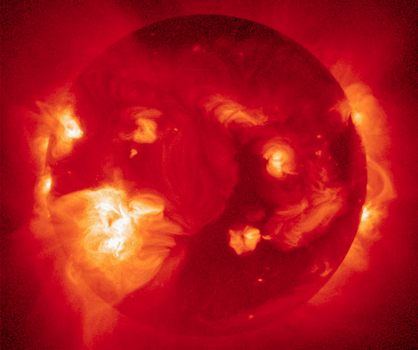
Coronal Holes, SOHO
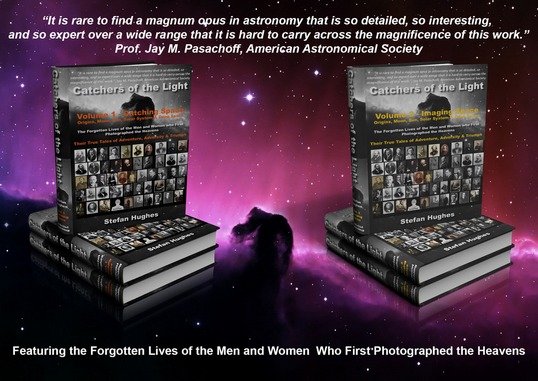
Buy the eBook or Printed Book at the 'Catchers of the Light' shop.